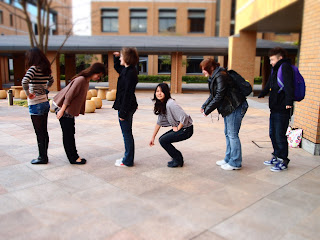I have been
writing this blog for four mouths and it changed my impression toward how I see
Japan. As native Japanese (although I think I have other cultural influence as
well), I did realize that I was surrounded by Japanese culture until I did this
blog. After I came to realize that many things relate to Japanese culture I
believe I became more “Japanese” than before and better photographer.
Before starting this blog, I thought it was
easy to find Japanese culture since I had an idea about what Japanese culture
is.
But as you could see from these pictures, all
the things that came up to my mind were traditional Japanese culture: things
that I rarely interacted in everyday life. Therefore, I thought this blog posts
would be challenging for me since teacher was looking for specific item or fact
about Japan(more on things that can be found in daily life). By paying
attention in class and hanging out with foreigner, it helped me to focus on
specific things in Japan like school uniform, Japanese fashion, hosts and etc.
The practice of taking picture that is Japanese
things became custom for me. Consequently, when I went back to my home (Mie)
this May, I took many Japanese things. I think this happened because as I
developed custom, my unconsciousness became consciousness. Therefore, things I feel
that I became more Japanese than before.
These are more pictures that I thought I would
not have taken before I did this blog. I feel doing barbeque with only sea food
is Japanese and so on. (Pictures were taken in Wakayama).
Throughout this blog I also improved my
photograph skills. As I learned from this class, I try not to include lights or
background that maybe disturbing. Moreover, I learned many techniques that may
be useful in the future as well: skill for portrait pictures.
I enjoyed posting blogs and I think this
helped me to understand my culture better and become an egg of visual
anthropologist. So if I were to do this blog post again I would like to use
character like my pet, Moose(cat), so that it would be more interesting for
people who is reading this blog. May be like this?
I would like to keep posting more and more so
that I would be conscious enough to introduce Japanese culture when I go study
abroad. I would like to thank Mr. F for giving this opportunity to think about
Japanese culture. It was good experience and had so much fun.







































